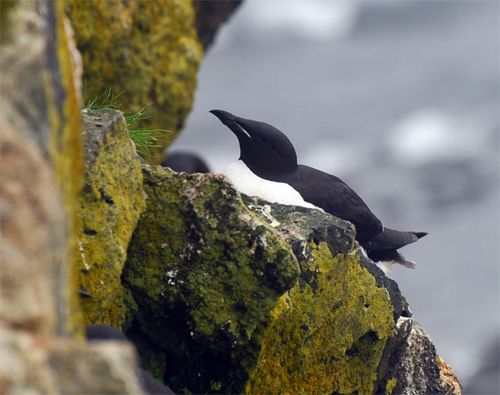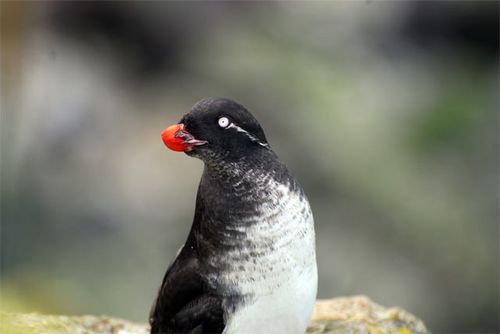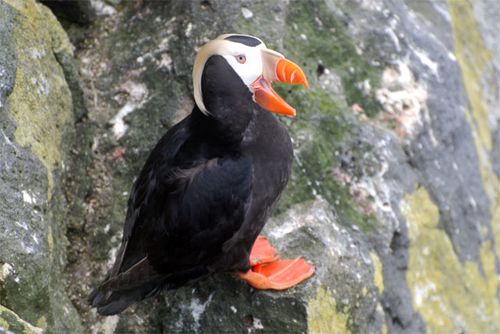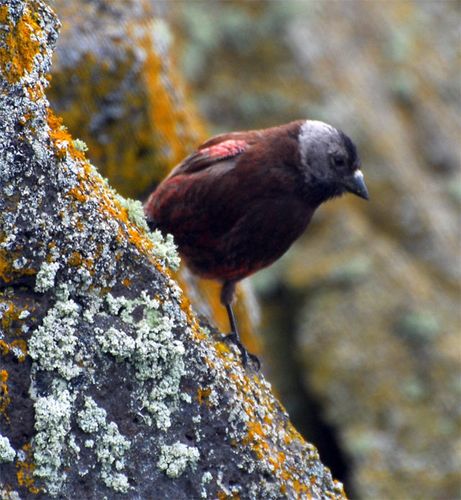Sitting, just sitting still in a natural area for an extended period of time offers one a glimpse into the natural world that goes completely unobserved when a person is in motion, no matter how fast or how slow you are walking. Hunters know this. My brother is a hunter and has told me stories of birds, even birds of prey, landing a short distance from his tree stand in the forest, not because he is camouflaged or otherwise hidden, but because he is quiet, because he remains still.I believe that two factors are at work during this type of watching of the natural world. I think that when we walk through a natural place, our motions, the sounds we make, our very presence is disruptive to the wild inhabitants. They freeze in place, they hide, they move on ahead of our perception of them, no matter how quietly we travel. The other factor I think, has to do with our own perceptions. When we are in motion as we pass through the environment, it can be very difficult to tune one's sense to all that is going on.
Here we do a lot of sitting. We sit, usually for four or five hours at a stretch, mainly to watch the Thick-billed Murres at Zapadni Dip or "Zap Dip" for short. We sit and we watch as they provide fish for their chicks and then we try to record any important events that may occur at the nest. Since hours may separate the time from one feeding to the next, it is very possible, after the fashion of a chameleon, to keep one eye on the rookery and the other on what is happening all around. We see different birds fly-in, Parakeet Auklets landing on near-by rocks, Tufted Puffins trying to land on me! Out on the sea's edge, seal pups wrestling in the surf, a bit further out, Orcas passing on by.



After the initial "changing of the guard" between shifts at the feeding watch , we settle in and begin to observe. "A murre flies in with a fish, nest number six". We record things like the time of the event, (if there are any changes in attendance at the nest), if the chick actually got to eat the fish, the type of fish, if we can make an identification, and so on.

Often there are long periods of inactivity punctuated by seconds of intense action. Nothing for two hours then, two birds fly in with a fish. Suddenly after you've been writing down data for two minutes, you notice a bird that you hadn't seen fly in. It can drive you crazy at times. Every ten minutes we make a scan of the colony to record exactly which birds are at each of the nests that we are following. This information is recorded onto a data form that invariably gets pelted with rain, smeared with mud, or otherwise impacted by the elements. Luckily, the waterproof paper holds up under the toughest conditions or we'd really have a mess!
The data that we gather on these murre watches will be compared against the results from the GPSA Global Positioning System (GPS) is a satellite-based navigation system used to track the location or position of objects on the Earth’s surface. tracks that come back from the murres that have been captured. Here is a short audio journal from a late night shift at Zap Gap.
Bird Species seen: Red-faced Cormorant, Harlequin Duck, Parakeet Auklet, Least Auklet, Tufted Puffin, Horned Puffin, Thick-billed Murre, Common Murre, Northern Fulmar, Least Sandpiper, Wandering Tattler, Rock Sandpiper, Ruddy Turnstone, Black-legged Kittiwake, Red-legged Kittiwake, Sabine's Gull, Glaucous-winged Gull, Winter Wren, Northern Raven, Lapland Longspur, Snow Bunting, Gray-crowned Rosy Finch. Mammals: Arctic Fox, Northern Fur Seal, Orcas!


Comments